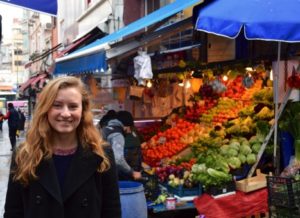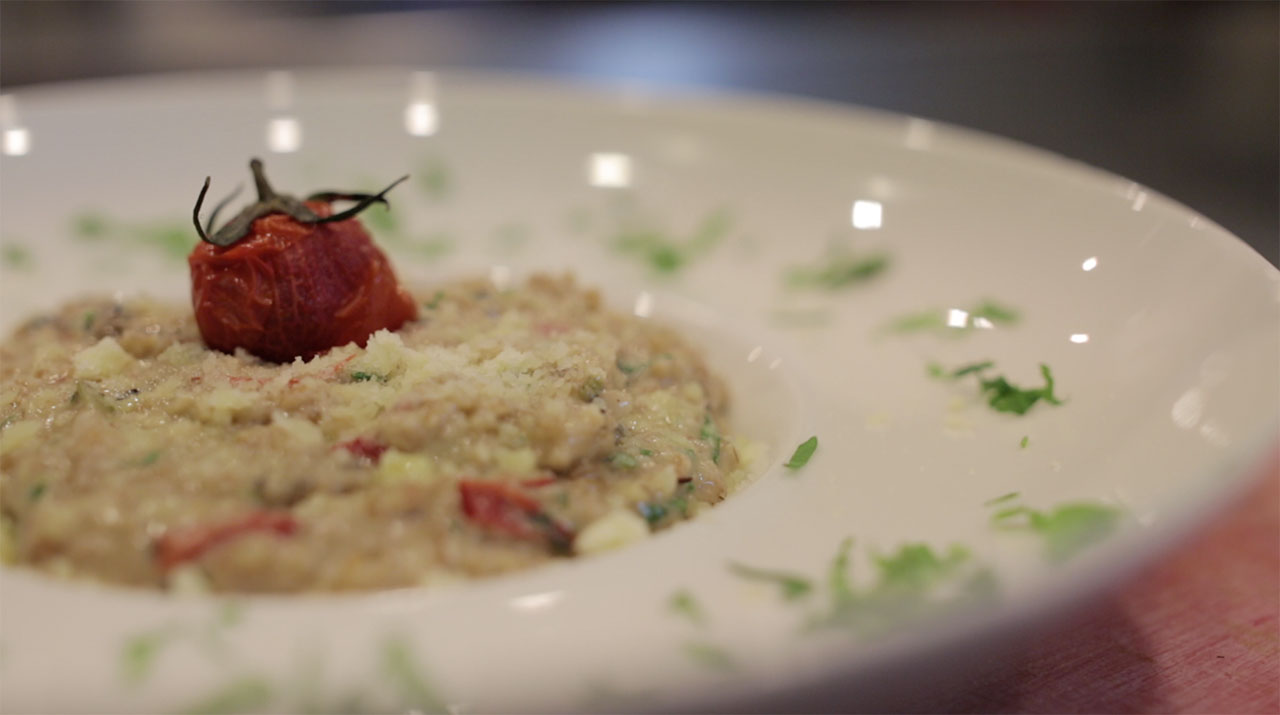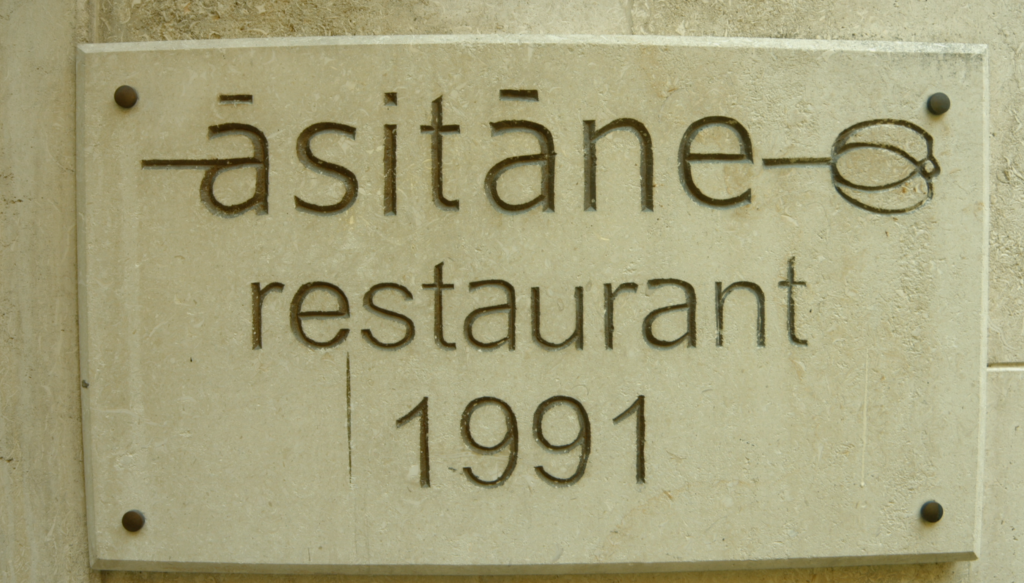
We arrive at the beautiful Āsitāne restaurant near the gorgeous Kariye (Chora) Museum in Edirnekapı neighborhood. This restaurant specializes in fine Ottoman Cuisine, and the way dishes were conceived at the Palace during the Ottoman Empire. They have unearthed and included over 200 recipes from palace archives into their menu since they opened up in 1991.
The garden of this beautifully restored historical mansion is a quiet oasis to enjoy a meal. We walk in before lunch hour with our numerous cameras, audio and lighting equipment and a 7-person team to take over the inside of the restaurant. General Coordinator Batur Durmay is a gracious host and puts up with us moving every furniture inches to the left or right for the perfect set up.
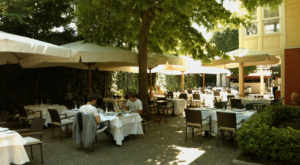

As we start chatting about the history of the restaurant he tells me that they may have been the very first establishment to specialize in the Ottoman Palace cuisine. This also meant they had to create an awareness and a demand to go with it. They had to do a lot of research to construct their menus, going into the archives, understanding what was used, when, and with which technique in the royal cuisine. It was a labor of love venturing into food while continuing their family owned boutique hotel business.
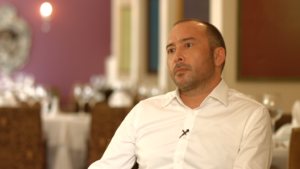
Batur Durmay, General Coordinator
He says only about 40% of their customers are from Turkey. And almost no one comes with a clear understanding of Ottoman cuisine or its refinement. In an indirect way, they have an educational mission as well, showcasing how things were combined with a clear intent in this cuisine: sweets are complemented with sour tastes, dishes with vinegar are cooked with sweet onions etc.
He doesn’t find it surprising at all that international customers are clueless about the variety that exists in the Turkish cuisine in general. He thinks this is due largely to Turkish immigrants living abroad and are in the food business. Almost none of them are chefs and they present a very limited version of the Turkish cuisine, he argues. Hence the tourists arriving in Turkey think of kebap more than anything else and maybe a few mezes as representative of Turkish food. They are of course delightfully surprised when they encounter the menu at Āsitāne.
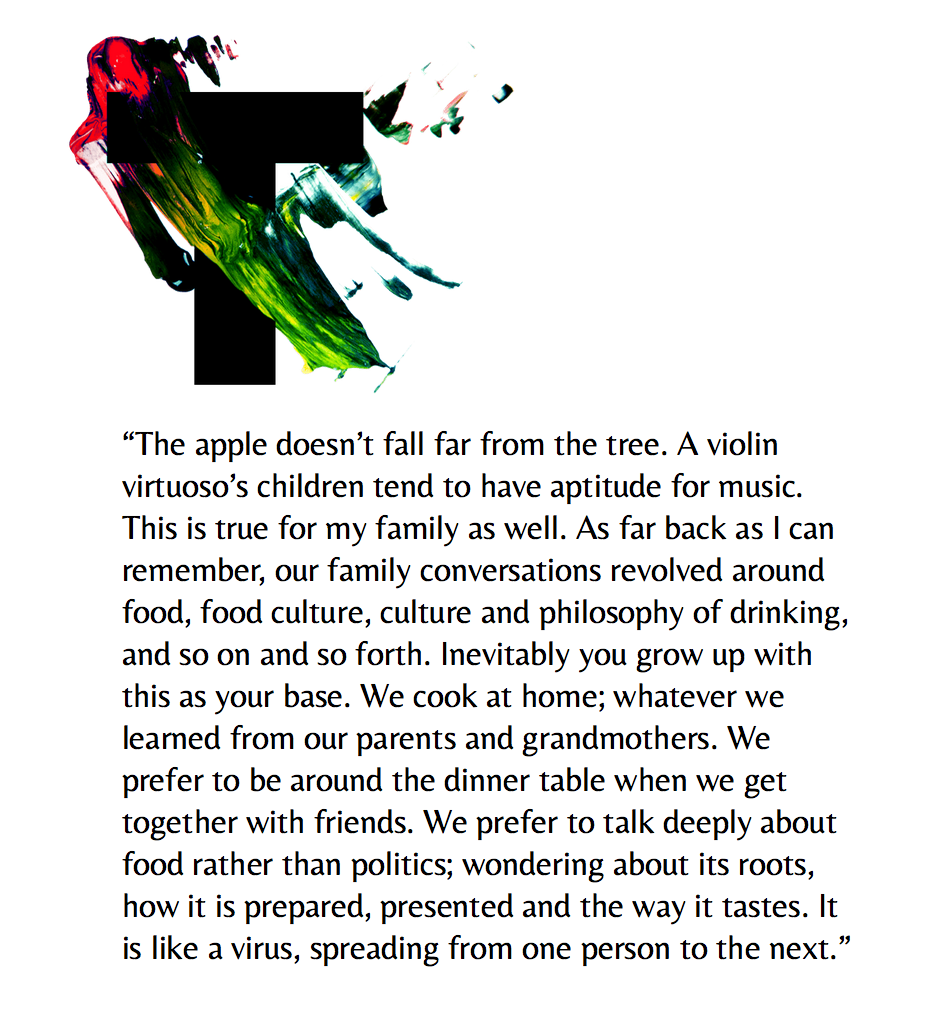
Batur Bey also talked about how our relationship with food changes from one generation to the next. His generation in Turkey, those who are in their 40s today, wasn’t interested in food, especially as a career he says. And people didn’t bother to learn to cook from their grandmothers either. This he sees as a loss, because without such upbringing one looses touch with the culture as well. Without a sofra (dinner table) tradition, one cannot pass that to the next generation. He is hopeful though as the younger generations are far more interested in food culture in general, and food as a career.
When I asked about his personal relationship to food he said: “The apple doesn’t fall far from the tree. A violin virtuoso’s children tend to have aptitude for music. This is true for my family as well. As far back as I can remember, our family conversations revolved around food, food culture, culture and philosophy of drinking and so on and so forth. Inevitably you grow up with this as your base. We cook at home; whatever we learned from our parents and grandmothers. We prefer to be around the dinner table when we get together with friends. We prefer to talk deeply about food rather than politics; wondering about its roots, how it is prepared, presented and the way it tastes. It is like a virus, spreading from one person to the next.”
Batur bey’s deep knowledge about the Ottoman cuisine is impressive. It is clear that this is more than a money making venture, but rather a labor of love for him. I believe he just had a baby (Congratulations!!!!), and I can easily picture him in the kitchen teaching his children what he learned from his parents and grandparents. I vividly remember my mom and aunts cooking and laughing together in my grandmother’s kitchen in Akcaabat (Trabzon) where a beautiful old wood stove resided with karalahana soup and tea bubbling on it, with corn bread in its belly, some of us lying on the comfy sofa next to the large kitchen table, my brother or cousins sitting on the windowsill with a book. There is something about cooking with and around children – what a beautiful legacy to pass on to the next generation…
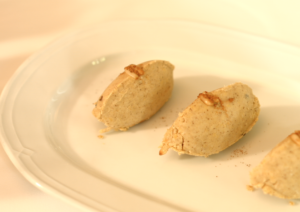
Humus dolmasi
As we wrapped up the interview they brought out dishes to taste which made me giddy as a child. YUM! Let’s be honest, one of the coolest things about this project is the food. Must come back to this place to have the full dinner experience next time I am in Istanbul. But I digress… First up is the 14th century recipe for humus dolması. There is no tahini in this recipe, instead it is made with chickpeas, currants and olive oil, among other spices. It is served as a starter at room temperature.
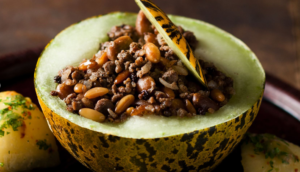
Stuffed melon
Then comes the kavun dolması (stuffed melon) with ground meat, rice, herbs, almonds and. Apparently the Ottomans loved stuffing anything in season, including fruits. This recipe dates back to 1539. It was served at the circumcision ceremony for Sultan Süleyman’s two sons in Edirne. At Āsitāne they make this recipe during winter with quince. During spring, they substitute tart pears and apples.
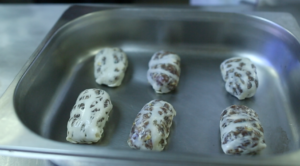
Fatty Apron Kebap ready to go into the oven…
The last plate is gömlek kebabı (“Fatty Apron” kebap on their menu), a recipe from 1764. It is a ground lamb and beef dish with coriander seeds, cumin, pine nuts and mint, wrapped in caulfat and roasted in the oven with lots of fresh cilantro. Batur bey suggested that this is a taste closer to our palette in Turkey today.
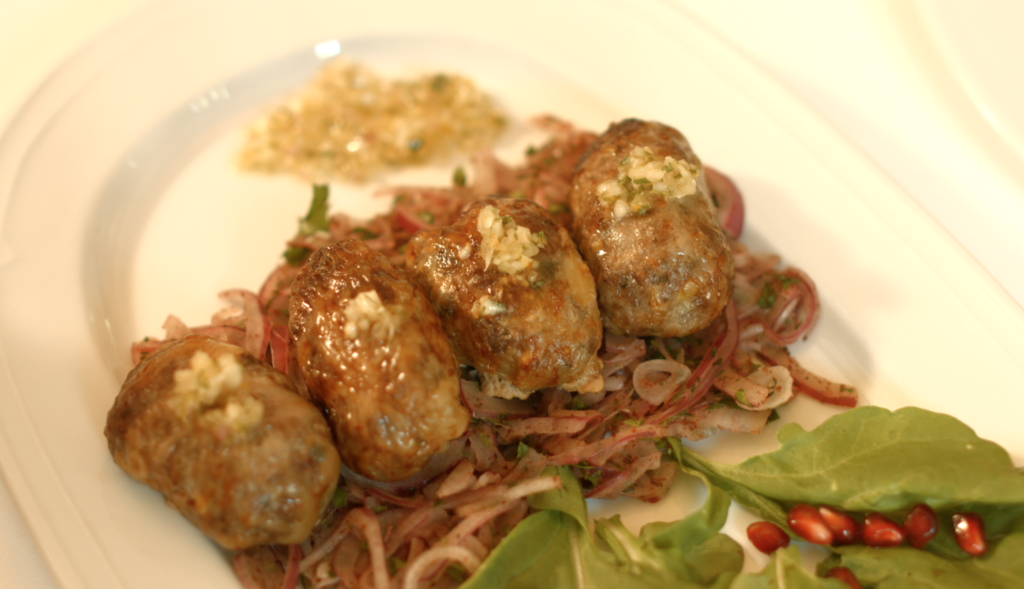
Gomlek kebap ready to be devoured
There are also Ottoman beverages on the table, made with seasonal fruits and spices. Şerbet is made with fragrant fruits and flowers by pressing (without processing or cooking the fruit), while şurup is made by boiling fresh or dried fruits with the addition of lemon sugar. Depending on the season they can be tart and less sugary, such as during summers to have a refreshing effect. During winter there is more honey and sugar used in these recipes. The most interesting one was the Demirhindi şurubu (tamarind syrup). Batur bey called this an Istanbul recipe, though sometimes we see it in the Aegean as well. They have thirty different recipes for şurup and şerbet at Āsitāne. Come on down and have a blissful meal in the garden…
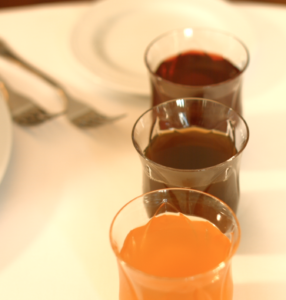
Ottoman Surup & Serbet selection
The saddest thing is though, these days there are no tourists in Istanbul, and restaurants like Āsitāne with mostly tourists as regular customers are suffering. Another restaurant we interviewed in the movie just closed its doors last week (Lokanta Maya). Let’s hope people will feel safe enough to visit Istanbul soon, before these beautiful establishments possibly go out of business, leaving a void in their wake.
Visit the Āsitāne at this address: Kariye Camii Sokak No:6
34240 Edirnekapı, İstanbul, Turkey
T: (212) 635 7997
F: (212) 521 6631
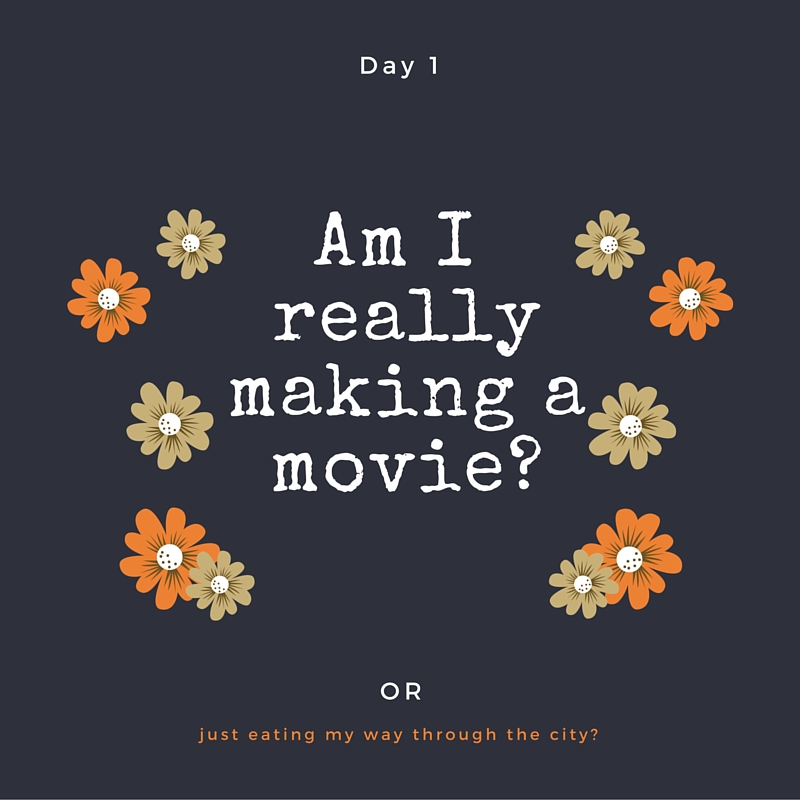
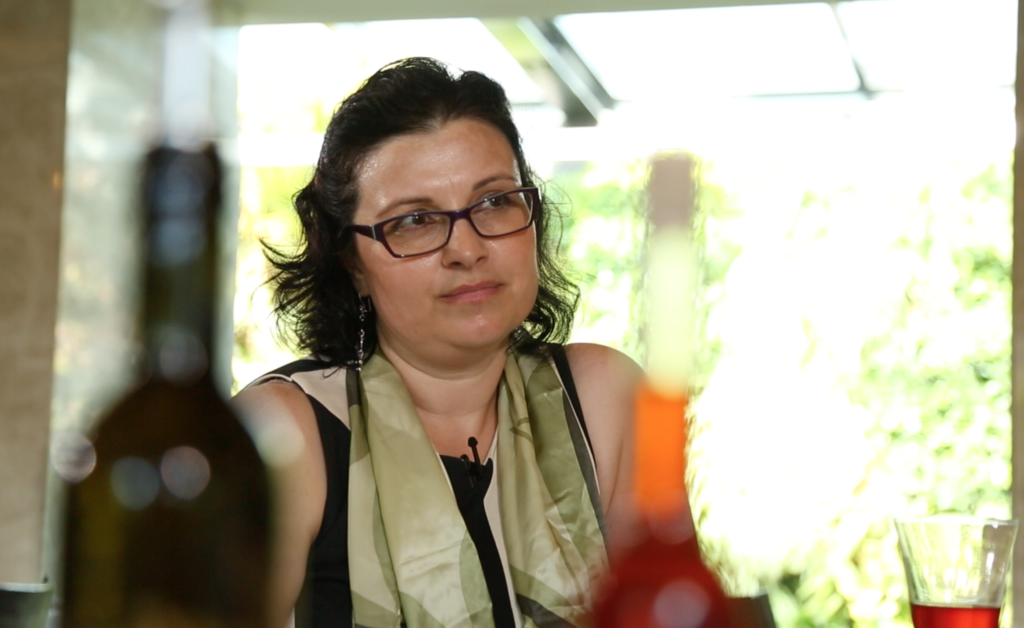

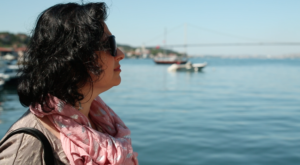

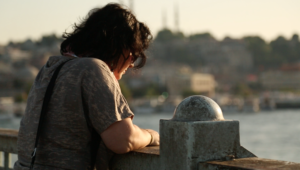
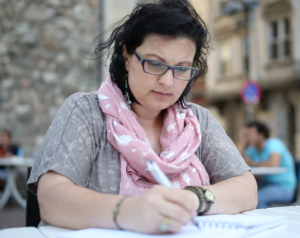
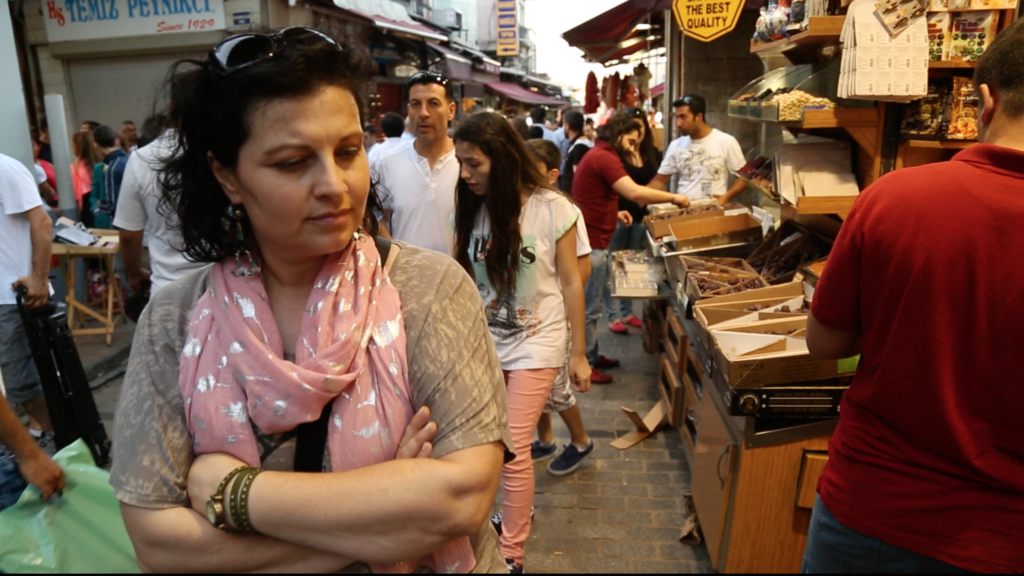
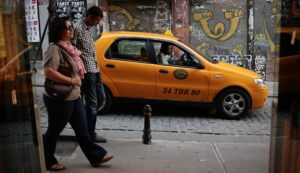
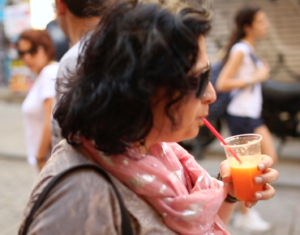
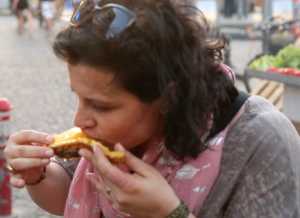
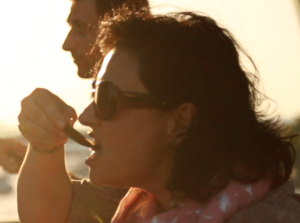
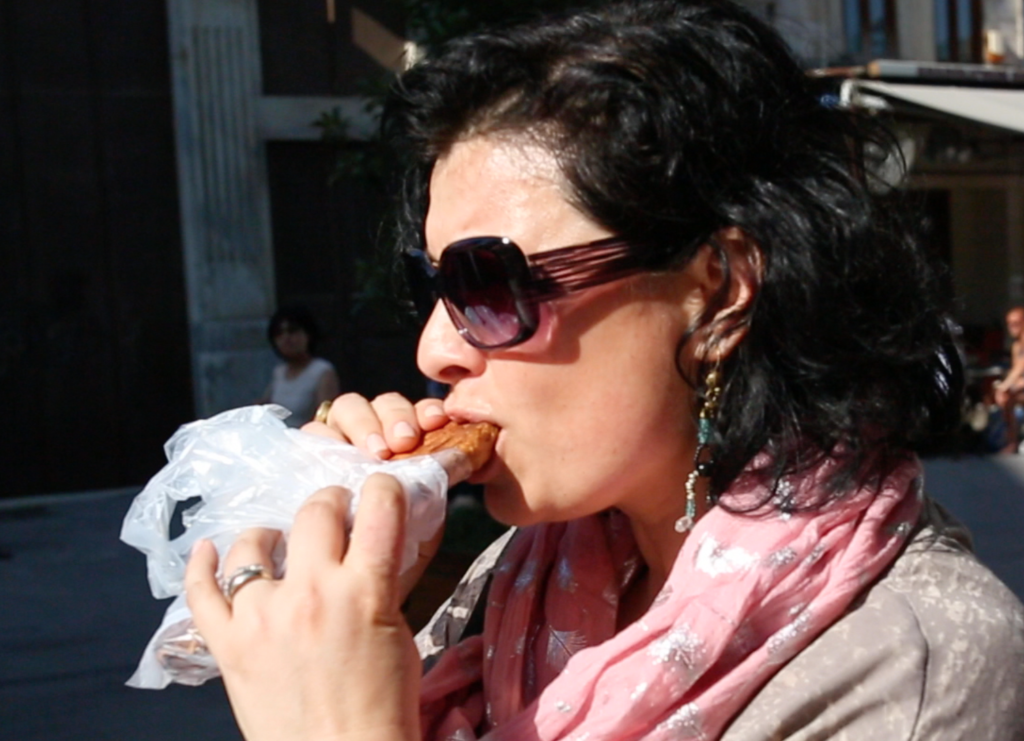

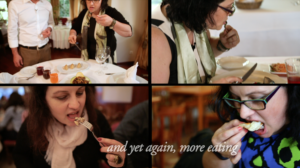
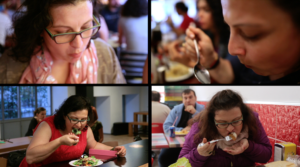
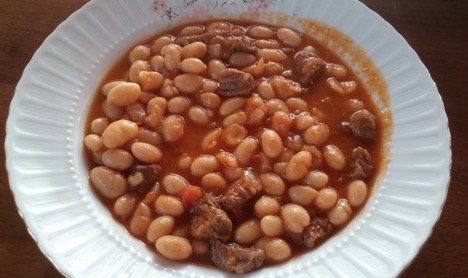
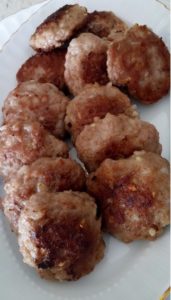
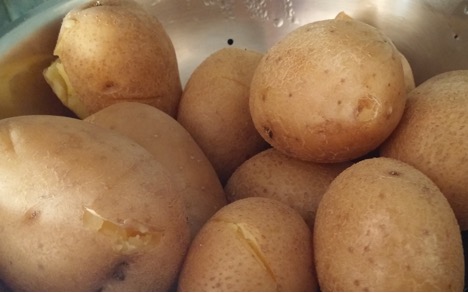

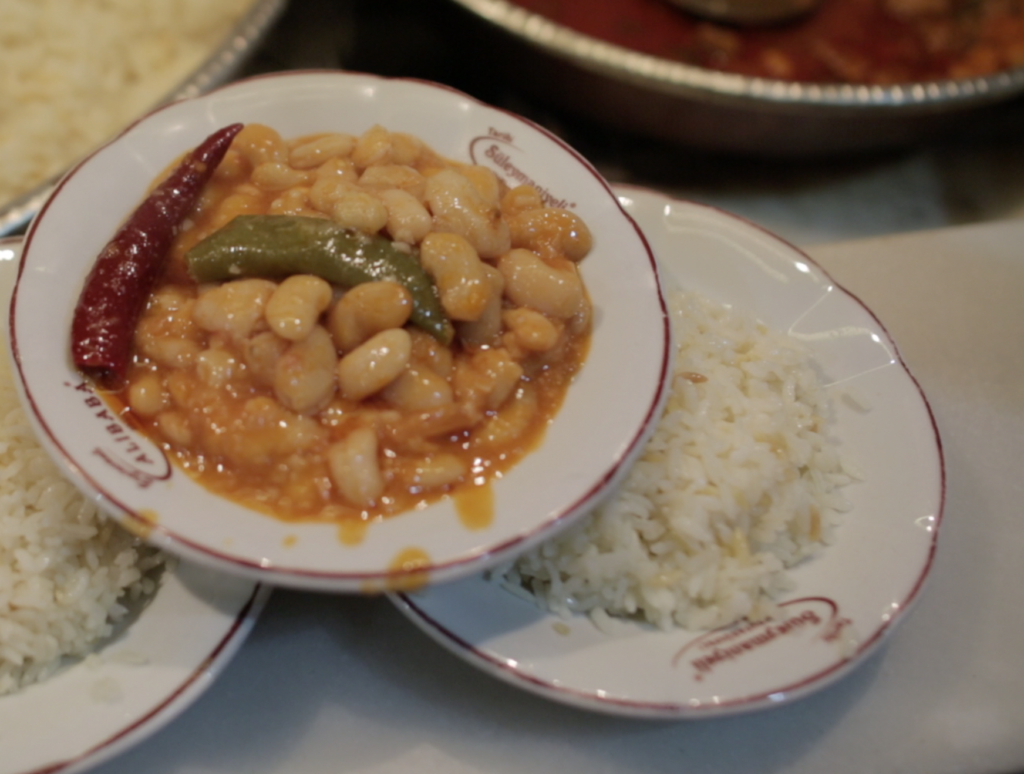 Kuru fasulye (dried beans) are the cheap comfort food of Turkey. I’ve always been a huge fan of beans in any form so it’s no surprise I took immediately to this simple dish of white beans stewed for hours with tomato paste, onion, maybe a few pieces of meat for added for flavor, and not much else. A deceptively simple recipe somehow transformed in the process of cooking into something beyond what its humble ingredients would suggest. But as important as the beans is what you eat with them.
Kuru fasulye (dried beans) are the cheap comfort food of Turkey. I’ve always been a huge fan of beans in any form so it’s no surprise I took immediately to this simple dish of white beans stewed for hours with tomato paste, onion, maybe a few pieces of meat for added for flavor, and not much else. A deceptively simple recipe somehow transformed in the process of cooking into something beyond what its humble ingredients would suggest. But as important as the beans is what you eat with them.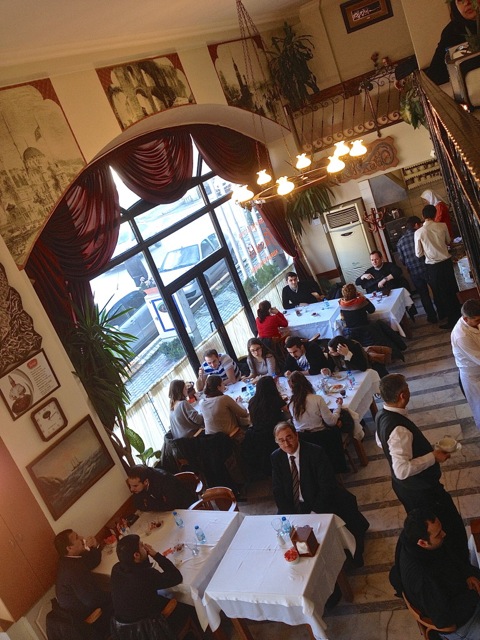 I went the waiter looked dubiously at me, probably wondering if he needed to get someone who spoke English. Finally he came over and asked if I needed a menu, but I said no and ordered beans, rice, pickles, and ayran, a classic combination. He looked surprised, then nodded in approval. While many cultures have a classic rice and beans combination, in Turkey each item is served separately on its own plate. Many people preserve the separation on the fork, taking a bite of one, then a bite of the other, where an American might mix the parts into one concoction. Pickles and/or small hot peppers provide a nice contrast to the subtle beans, to which it’s acceptable to add dried red pepper, washing it all down with the salty yogurt drink, ayran. I’ve noticed recently that some like their kuru fasulye with sliced raw onion on the side, but I’m not sure if the onion is a substitute for the pickles or both can be added to the combination: further investigation is needed (any excuse to eat more beans!). Kuru fasulye is a classic example of one strain of Turkish culinary thought: the belief that simpler is better.
I went the waiter looked dubiously at me, probably wondering if he needed to get someone who spoke English. Finally he came over and asked if I needed a menu, but I said no and ordered beans, rice, pickles, and ayran, a classic combination. He looked surprised, then nodded in approval. While many cultures have a classic rice and beans combination, in Turkey each item is served separately on its own plate. Many people preserve the separation on the fork, taking a bite of one, then a bite of the other, where an American might mix the parts into one concoction. Pickles and/or small hot peppers provide a nice contrast to the subtle beans, to which it’s acceptable to add dried red pepper, washing it all down with the salty yogurt drink, ayran. I’ve noticed recently that some like their kuru fasulye with sliced raw onion on the side, but I’m not sure if the onion is a substitute for the pickles or both can be added to the combination: further investigation is needed (any excuse to eat more beans!). Kuru fasulye is a classic example of one strain of Turkish culinary thought: the belief that simpler is better.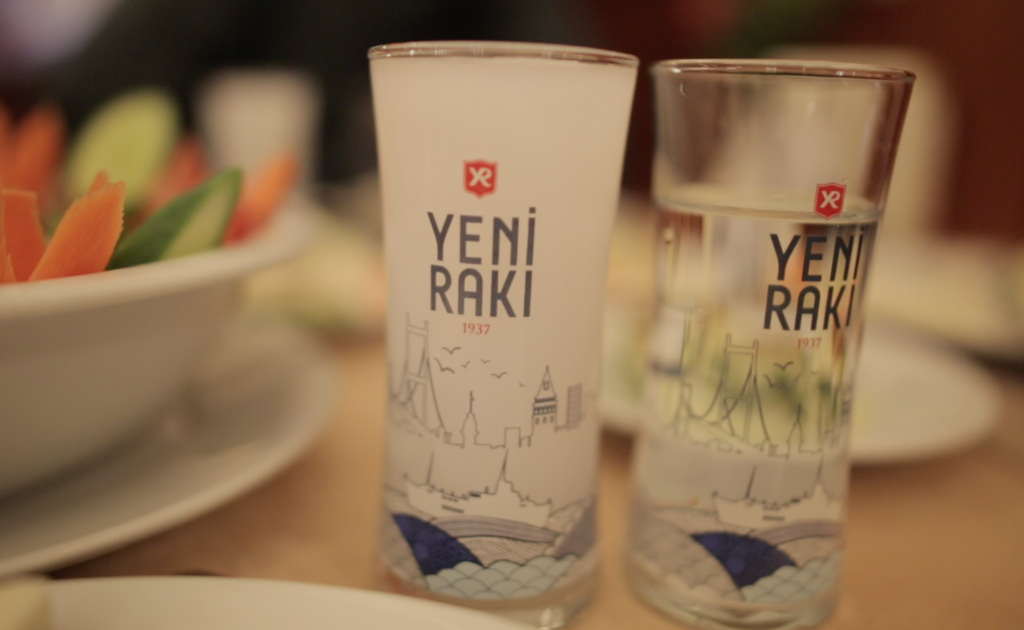 akı, which I love, but as a lightweight when it comes to alcohol I’m not exactly an expert in this very social group activity. However I do know that eating melon with white cheese while drinking rakı is the minimum required when you partake, or you can spend an entire night with a group of friends sharing small dishes, eating fish, and singing around the table. There are rules associated with drinking rakı and eating the foods that go with it, as was clearly revealed to me by the following conversation:
akı, which I love, but as a lightweight when it comes to alcohol I’m not exactly an expert in this very social group activity. However I do know that eating melon with white cheese while drinking rakı is the minimum required when you partake, or you can spend an entire night with a group of friends sharing small dishes, eating fish, and singing around the table. There are rules associated with drinking rakı and eating the foods that go with it, as was clearly revealed to me by the following conversation: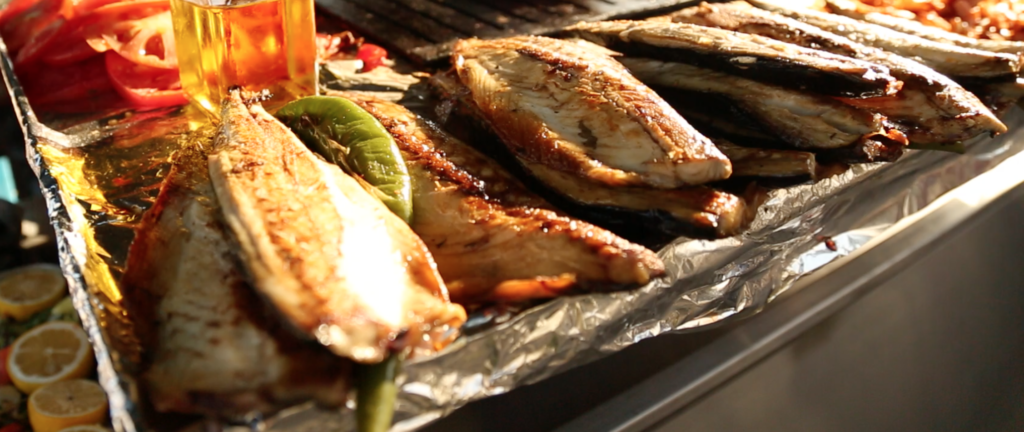 please, please not order those two things together, because it would make me sick. Apparently this is a common myth in many places, although G6ogle tells me it’s not true. But because my waiter was so disturbed I changed my order and asked some Turkish friends about it later. They nodded wisely and confirmed that I would indeed become quite ill if I combined ayran and fish, so I reserve that combination for home. As I was eating my ayran-free dinner that night I looked over and saw that the woman at the table next to me was drinking a glass of rakı and a glass of red wine at the same time. Apparently this combination was perfectly acceptable to my waiter—I found the thought of it repulsive—but maybe that’s my cultural bias showing.
please, please not order those two things together, because it would make me sick. Apparently this is a common myth in many places, although G6ogle tells me it’s not true. But because my waiter was so disturbed I changed my order and asked some Turkish friends about it later. They nodded wisely and confirmed that I would indeed become quite ill if I combined ayran and fish, so I reserve that combination for home. As I was eating my ayran-free dinner that night I looked over and saw that the woman at the table next to me was drinking a glass of rakı and a glass of red wine at the same time. Apparently this combination was perfectly acceptable to my waiter—I found the thought of it repulsive—but maybe that’s my cultural bias showing. Kelly Hevel has been living in Istanbul since 2006. While “demystifying art and the creative practice,” she writes
Kelly Hevel has been living in Istanbul since 2006. While “demystifying art and the creative practice,” she writes 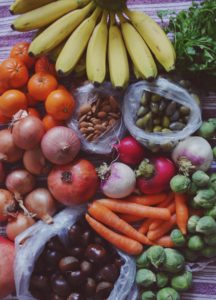 e to get creative in the produce section of my grocery store in New Jersey. I would walk a predictable pattern, throwing a pint or two of strawberries into my basket before moving toward my other favorites: blueberries and bananas. It made no difference if the weather was hot and sunny or the roads were covered in snow, I could walk into that same store and see the same things in their designated locations. Whenever I wanted to cook, I would scroll through the pages of food blogs waiting for anything to catch my eye, then rush off to the store expecting every ingredient I needed to be there for me.
e to get creative in the produce section of my grocery store in New Jersey. I would walk a predictable pattern, throwing a pint or two of strawberries into my basket before moving toward my other favorites: blueberries and bananas. It made no difference if the weather was hot and sunny or the roads were covered in snow, I could walk into that same store and see the same things in their designated locations. Whenever I wanted to cook, I would scroll through the pages of food blogs waiting for anything to catch my eye, then rush off to the store expecting every ingredient I needed to be there for me.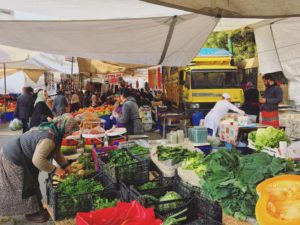
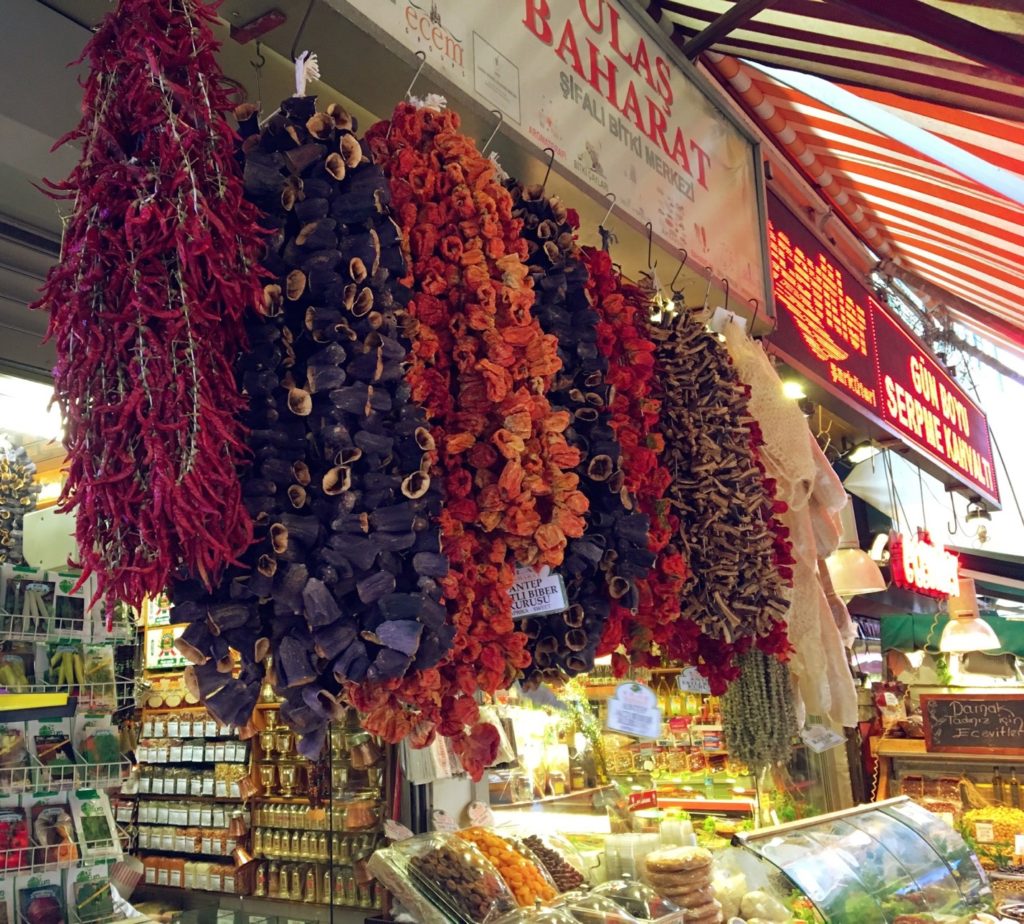
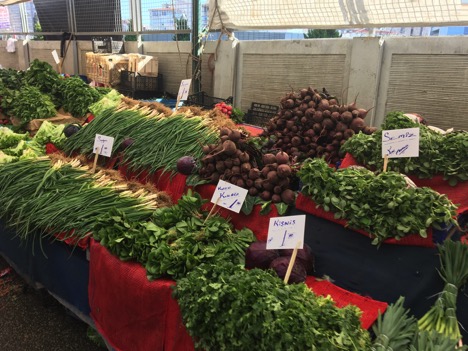 estnut in May, but living in Turkey this past year has transformed me both as a consumer and a cook. Rather than entering the store with a recipe and hoping to find each needed ingredient, I enter my home with bags of whatever fruits and vegetables are in season, and then search for a recipe that utilizes them. I’ve learned to buy things like tomatoes and pumpkin in bulk, and then preserve them as tomato sauce and pumpkin puree in my freezer for when they disappear from the markets. And most importantly, when I see something being sold out of its season, I walk away. When you taste a Turkish strawberry in June, the strawberries in an American grocery store in January don’t seem appealing anymore.
estnut in May, but living in Turkey this past year has transformed me both as a consumer and a cook. Rather than entering the store with a recipe and hoping to find each needed ingredient, I enter my home with bags of whatever fruits and vegetables are in season, and then search for a recipe that utilizes them. I’ve learned to buy things like tomatoes and pumpkin in bulk, and then preserve them as tomato sauce and pumpkin puree in my freezer for when they disappear from the markets. And most importantly, when I see something being sold out of its season, I walk away. When you taste a Turkish strawberry in June, the strawberries in an American grocery store in January don’t seem appealing anymore.